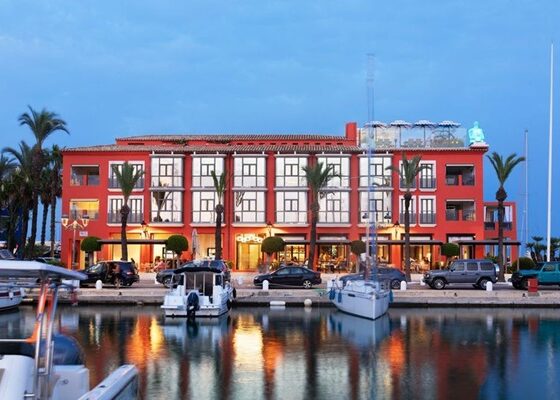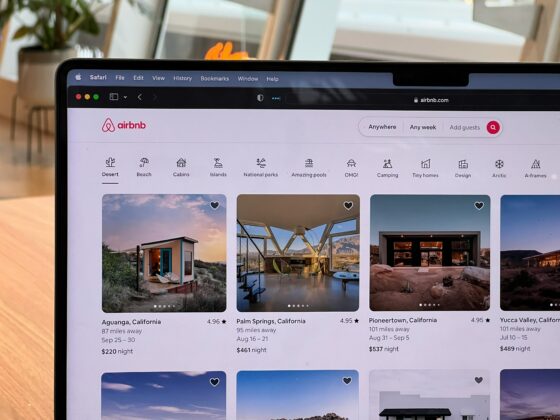September 2025 Client Letter
While the macro-economic environment in the U.S. is one of heightened uncertainty, partly driven by lack of clarity on economic policy, Real GDP increased 3.0% in 2Q2025 and is forecasted to remain positive moving forward. Nonetheless, the strength of the underlying economy may be far more modest than the 2Q GDP print implies. For example, when excluding a tariff-induced net trade imbalance, Real GDP declined roughly 2% in the quarter.
U.S. RevPAR declined 0.5% in the second quarter, consistent with the actual health of the underlying economy, rather than the headline GDP print. When adjusting for April’s difficult comparisons tied to the Easter shift and the 2024 solar eclipse, RevPAR performance moderated as the quarter progressed, with June down (1.2)%, driven by a (1.7)% occupancy decline and 0.4% ADR growth.
Additionally, and perhaps most importantly, job growth has been declining since May 2025, apart from the healthcare sector. In fact, between May and July 2025, U.S. employment declined by 94,200 jobs when excluding the healthcare sector. Over that period, about half of the major economic sectors experienced a decline in employment levels, with the others exhibiting anemic growth excluding the healthcare sector.
Typically, such a decline in jobs would indicate that the U.S. is in an economic recession or heading into one. However, the stock market continues to achieve new highs and during July, only 33% of the economists surveyed by the Wall Street Journal anticipate the U.S. to enter recession over the next twelve months (down from 45% three months earlier). Many therefore, believe the U.S. economy may be entering a new era, fueled by continued technological advancement (artificial intelligence) that will enable companies to operate more efficiently and continue to grow and invest while hiring fewer people. Of note, Mark Zandi of Moody’s Analytics (the economist we rely on) estimates the probability of recession at 49% and sees the greatest risk of recession in late 2025 or early 2026.

Nonetheless, the implications of such a shift across the lodging industry could be pronounced. Fewer jobs will translate into fewer people with means to travel. A tight labor market will also limit upward pressure on wage growth, which will further limit growth in disposable income for leisure travelers, a reversal of the strength experienced across the segment coming out of the pandemic. However, these leisure headwinds would be skewed away from the high-end leisure traveler, which is likely to be more insulated and could even benefit from these macro-economic dynamics.
In the more immediate term, heightened uncertainty tied to policy initiatives and the implications on unemployment levels and inflation have caused the U.S. consumer to grow increasingly wary, as evidenced by the dramatic decline in the University of Michigan Consumer Sentiment Index, which registered a low of 53.6 during May, the lowest level since 1980. While Consumer Sentiment has improved from this historical trough, it remains at extremely low levels.
Additionally, through July 2025, year-to-date outbound foreign travel has continued an upward trajectory, though the pace of growth has slowed from 8% in 2024 to 3% this year. Of note, on a trailing-twelve-month basis as of July, there were 16 million more U.S. citizen outbound travelers than in 2019. A declining dollar should limit the growth of this metric over the next twelve months, but the message is clear, those with the means to travel abroad are doing so to a greater degree than pre-pandemic periods.
Subsequent to a 9% increase in inbound international travelers during 2024, volume has declined (4%) year to date through July representing an additional challenge for the sector. The shift in this trend can be tied to policy and rhetoric coming from the current presidential administration, ranging from tariffs to border control. In fact, Canadian travel to the U.S. is down over 7% yearto- date, a decline of almost 500,000 visitors. This is most relevant as the tariff war hit Canada months before many other countries and could be an indication of what is still to come from other international visitation feeder nations.
In 2019, the U.S. was a net importer of about 4 million travelers. On a trailing-twelve-month basis as of July, the U.S. was a net exporter of about 16 million travelers. That 20-million traveler swing is weighing on hotel performance, especially in gateway markets.
We expect this trend to reverse in 2026 as sentiment toward the U.S. improves and America hosts the World Cup across multiple cities. We anticipate that the World Cup events alone could boost 2026 U.S. RevPAR by nearly 2%, primarily through ADR growth. While that will be a positive nationally, the impact will be isolated to a handful of gateways markets hosting marquis matches (New York, Miami, Los Angeles, Atlanta and Dallas primarily).
Shifting to our outlook for corporate demand, sluggish job growth may not have the same negative implications as it does for leisure demand. Entry-level roles are less likely to be corporate travelers and are the jobs most at risk from technological advancement. From a group perspective, trends continue to be holding despite the soft jobs data. In fact, we estimate that the U.S. convention center booking pace is up 4% on a year-over-year basis in 2025, following the 3% increase in 2024. The convention booking pace is up another 7% year-over-year in 2026.
This backdrop is likely to weigh on lodging fundamentals for several quarters. Moody’s Analytics outlook for economic growth is muted moving forward and incorporates the following key national assumptions that drive our outlook:
- The Fed will cut the target Fed Funds Rate by 25 bps per quarter beginning in September.
- U.S. GDP will increase 1.1% in the third quarter, 1.6% in 2025 and 1.4% in 2026.
LARC forecasts 2025 RevPAR to decrease (0.7)%, driven by a 0.8% ADR increase and a (1.6)% occupancy decline. For 2026, we expect RevPAR to increase 0.9%, driven by a 1.4% increase in ADR and a (0.5)% decline in occupancy. However, it is important to note that most markets not impacted by the World Cup will see far softer performance.
We have also issued an upside scenario and a downside scenario of our U.S. forecast. The upside scenario is based on Moody’s Analytics forecast that assumes there is a 75% probability that the U.S. economy will underperform the upside scenario. The downside scenario assumes that there is a 75% probability that the U.S. economy will outperform the downside scenario.
Under the upside scenario, RevPAR would increase 1.3% in 2025 and 9.0% in 2026, before turning negative in 2027. Under the downside scenario, RevPAR would decrease (2.6)% in 2025, and another (2.6)% in 2026, before beginning to recover in the middle of 2027.
Lastly, with increasing economic uncertainty, we expect U.S. hotel cap rates to rise 25 bps through 2029, on average. This increase is driven by widening spreads (or risk premia), offset by expectations for the Fed to cut rates.
We continue to expect there to be U.S. lodging markets that materially outperform as well as those that underperform national averages. Over the medium-to long term, we expect markets with outsized exposure to high-end leisure transient and group to outperform. However, in the immediate term, those with strong convention calendars and World Cup exposure are likely to yield the most growth.
Furthermore, expense pressures will become a substantial factor in identifying markets that are winners and those that are losers, particularly with several major cities recently completing or soon to negotiate collective bargaining agreements. Recent finalized agreements in several U.S. cities have resulted in a roughly 10% annual increase in wages over the next five years and a reset back to pre-pandemic staffing levels. We expect nonunion hotels to keep pace with wage growth at union properties across these markets, though many are already paying wages above union-mandated levels.
Layering in added political risks like the Safe Hotels Act in New York City and the increased minimum wage in Los Angeles (from $18 to $30 by 2028), which could be duplicated in other major markets, wage and expense growth is likely to be a bigger component of value change than top-line performance across many markets. Therefore, wage and expense growth and their strain on margin growth materially shape our views on markets that are best and worst for investment today.
Transparency surrounding forecasting is critical to the lodging industry. We believe the best business decisions are based on the highest quality data and information available at the time of drawing such conclusion(s). We take that approach with our forecasts, using the best and most relevant available information to provide the most likely outcomes at the time of issuance.
LARC’s industry-leading market intelligence is available to help all industry participants navigate the current environment and position themselves for success. Please contact us to learn more about our services and products, or if there is any other way we may be able to serve you.
LARC’s Industry Outlook
Currently, for 2025, Lodging Analytics Research & Consulting (LARC) expects U.S. RevPAR to decrease by (0.7)% to $99.50, driven by ADR growth of 0.8% to $160.35, while occupancy declines (1.6)% to 62.1%. For 2026, LARC expects U.S. RevPAR to increase by 0.9% to $100.43, driven by ADR growth of 1.4% to $162.65, while occupancy declines (0.5)% to 61.7%.
LARC forecasts 2025 U.S. Hotel EBTDA to decline (5.5)%, with margin erosion, and Hotel Values to decrease (4)%. For 2026, LARC forecasts U.S. Hotel EBITDA to decrease (1.1)%, with slight margin erosion, and Hotel Values to decrease (3)%. Over the next five years, LARC expects Hotel Values to increase a total of 2%.
The below table illustrates a summary of LARC’s current U.S. Hotel Industry Outlook in contrast to last quarter’s outlook.
Our 2025 operating outlook has moderated considerably, tied to a substantially reduced economic outlook as discussed throughout this report. Declining top-line performance negatively affects LARC’s Hotel EBITDA outlook, which in turn results in our reduction in hotel values.
LARC’s U.S. RevPAR model has an R-squared of 98.8% within a standard error of 2.7%, back-tested to 2000. LARC’s U.S. Cap Rate model has an R-squared of 98.6% within a standard error of 26 bps, back-tested to 2005.
Market Outlooks
Listed below are the best and worst performing markets based on our forecasts. Similar to LARC’s U.S. forecast, our market level forecasts are structured on multi-variable regression models with a high level of historical accuracy.
Additional details regarding our market outlooks can be found in LARC’s Market Intelligence Reports. You can purchase an individual report for any of our covered markets or the U.S. overall on our website here.
2025
Top Markets for RevPAR Growth:
San Francisco, Palm Beach, St. Louis, Columbus (OH) &
Orlando
Bottom Markets for RevPAR Growth:
Memphis, Houston, Austin, Louisville & Cincinnati
2026
Top Markets for RevPAR Growth:
Maui, San Francisco, Miami, San Antonio & Los Angeles
Bottom Markets for RevPAR Growth:
Pittsburgh, St. Louis, Ann Arbor, Charlotte & Cincinnati
5-Year Outlook (2024 – 2029)
Top Markets for RevPAR Growth:
Maui, Palm Beach, Orlando, Raleigh & Miami
Bottom Markets for RevPAR Growth:
Cincinnati, Louisville, Houston, Kansas City & Pittsburgh
Top Markets for Value Change:
Orlando, New Orleans, Puerto Rico, Miami & Tampa
Bottom Markets for Value Change:
Austin, New York, St. Louis, Dallas & Chicago
This report is compiled and produced by Lodging Analytics Research and Consulting (“LARC”). LARC does not represent the data herein to be definitive or accurate, nor should the contents be construed as recommendations on policies or actions. The material herein is based on current public information that we consider reliable, but we do not represent it as accurate or complete, and it should not be relied on as such. Without prejudice to the generality of the foregoing, we do not represent, warrant, undertake or guarantee that the use of this report or any information contained herein will lead to any particular outcome or result. Quotation, reproduction or transmittal of the information contained herein in any form or by any means, whether electronic, photocopying, recording or otherwise, is not permitted without consent from LARC.
Ryan Meliker
President
Lodging Analytics Research & Consulting, Inc

















